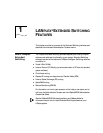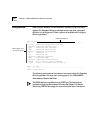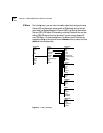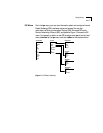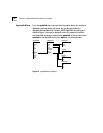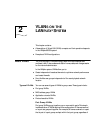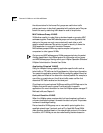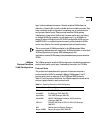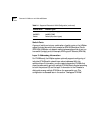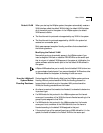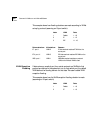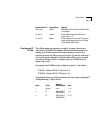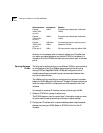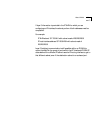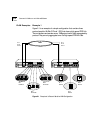
About VLANs 2-3
layer 3 subnet address information. Protocol-sensitive VLANs allow the
restriction of flood traffic for both routable and nonroutable protocols. They
have a relatively simple configuration comprising one or more protocols
and groups of switch ports. These protocol-sensitive VLANs operate
independent of each other. Additionally, the same switch port can belong
to multiple VLANs. For example, you can assign port 1 on a LANplex to
several IP subnet VLANs, plus one IPX VLAN, one AppleTalk VLAN, and one
NetBIOS VLAN. In a multiprotocol environment, protocol-sensitive VLANs
can be very effective for controlling broadcast and multicast flooding.
Two or more types of VLANs can coexist in the LANplex system. When
associating received data with a particular VLAN configuration in a multiple
VLAN configuration, port group, MAC address group, and
application-oriented VLANs always take precedence over protocol-sensitive
VLANs.
LANplex
Protocol-Sensitive
VLAN Configuration
The LANplex protocol-sensitive VLAN configuration includes three elements:
protocol suite, switch ports, layer 3 addressing information for IP VLANs.
Protocol Suite
The protocol suite describes which protocol entities can comprise a
protocol-sensitive VLAN. For example, LANplex VLANs support the IP
protocol suite, which is made up of the IP, ARP, and RARP protocols.
Table 2-1 lists the protocol suites that the LANplex supports, as well as the
protocol types included in each protocol suite.
Table 2-1 Supported Protocols for VLAN Configuration
Protocol Suite Protocol Types
IP IP, ARP, RARP (Ethertype, SNAP PID)
Novell® IPX IPX (Ethertype, DSAP, SNAP PID)
AppleTalk® DDP, AARP (Ethertype, SNAP PID)
Xerox® XNS XNS IDP, XNS Address Translation, XNS Compatibility
(Ethertype, SNAP PID)
DECnet™ DEC MOP, DEC Phase IV, DEC LAT, DEC LAVC (Ethertype,
SNAP PID)
SNA SNA Services over Ethernet (Ethertype)
Banyan VINES® Banyan (Ethertype, DSAP, SNAP PID)
continued



